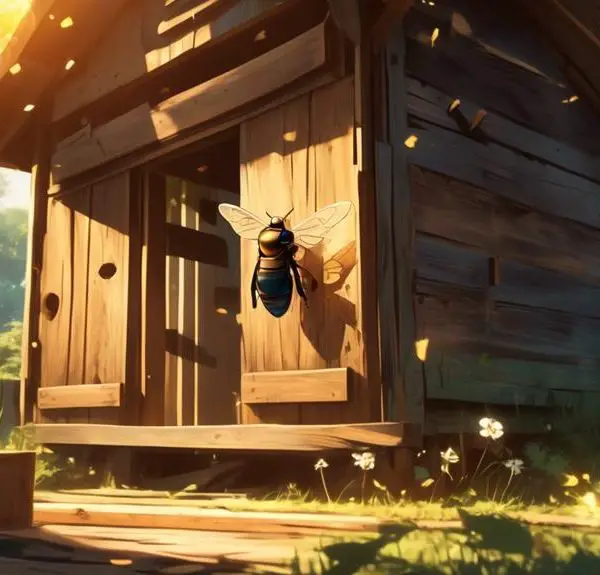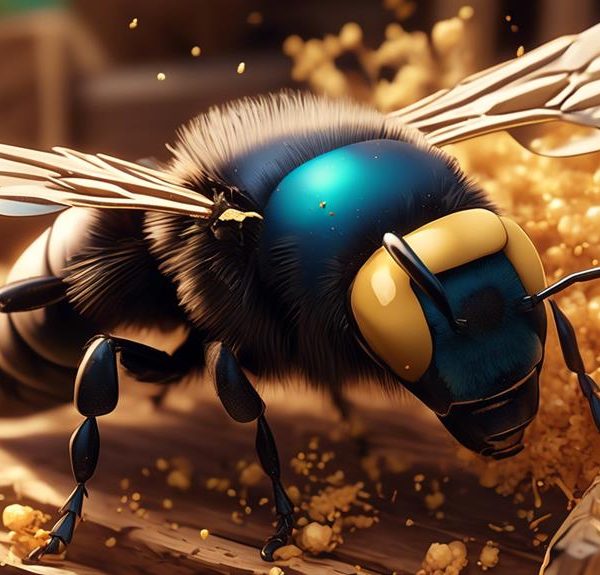Dive into the fascinating world of carpenter bees as we explore whether they shed their skin, sparking curiosity in the reader's mind.
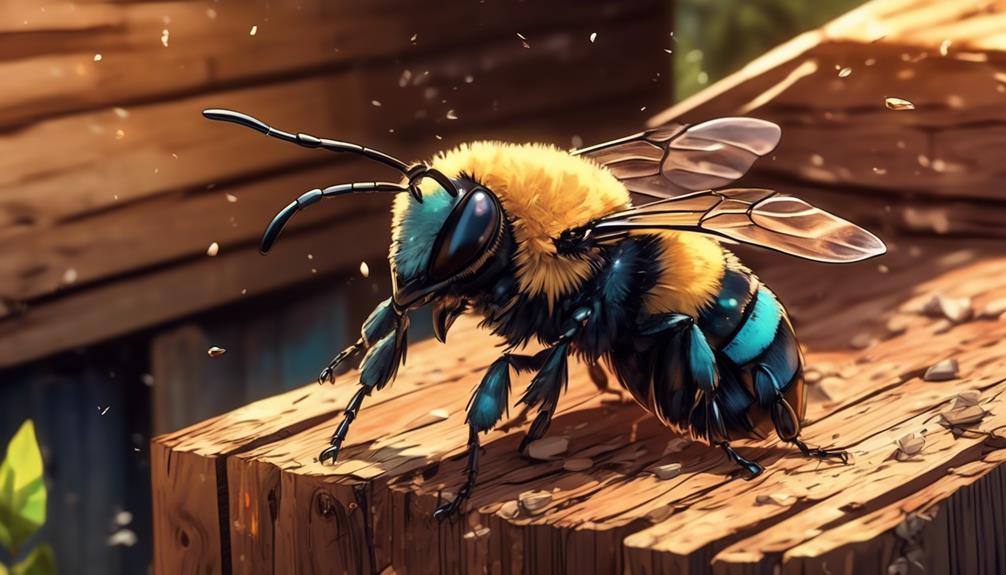
Do Carpenter Bees Shed Their Skin
You know what they say – don't judge a book by its cover. Well, the same might just apply to our friend the carpenter bee. You've likely seen these industrious insects buzzing around, burrowing into wood, but have you ever stopped to consider their life cycle?
More specifically, do these creatures, much like many of their insect brethren, undergo a process of shedding or molting their skin?
As we explore this intriguing question, you'll uncover new dimensions to the seemingly simple life of the carpenter bee, and perhaps gain a newfound appreciation for these hardworking pollinators.
Key Takeaways
- Carpenter bees undergo molting, shedding their old exoskeleton as they grow.
- Molting allows carpenter bees to develop into their adult form, with fully developed wings, stingers, and specialized mouthparts.
- Metamorphosis greatly impacts the size, functionality, and role of carpenter bees.
- Carpenter bees play a critical role in pollination, contributing to the growth of plants and trees and enhancing biodiversity in ecosystems.
Understanding Carpenter Bees

To truly understand carpenter bees, you need to delve into their distinctive biological characteristics and behaviors. These bees, belonging to the genus Xylocopa, are large, robust insects with a unique ability to bore into wood. They're solitary creatures, meaning each female bee is responsible for her own nest.
Unlike honey bees, carpenter bees don't produce honey or beeswax. They're not social insects, and they don't live in hives. Their primary focus is on reproduction and survival, so they're often viewed as pests. But despite their bad rap, they play a critical role in pollination, especially for open-faced flowers.
Carpenter bees are known for their metallic sheen and black or dark blue coloring. Male carpenter bees don't have stingers, while females do but are rarely aggressive unless provoked. They prefer to feed on nectar, using their long tongues to reach into deep flowers.
Their nests, or galleries, are fascinating structures, often extending several feet into wood. The entrance hole is perfectly circular, showcasing their precision and attention to detail. Understanding these aspects of their biology and behavior gives you a new appreciation for these industrious insects.
Carpenter Bee's Life Cycle
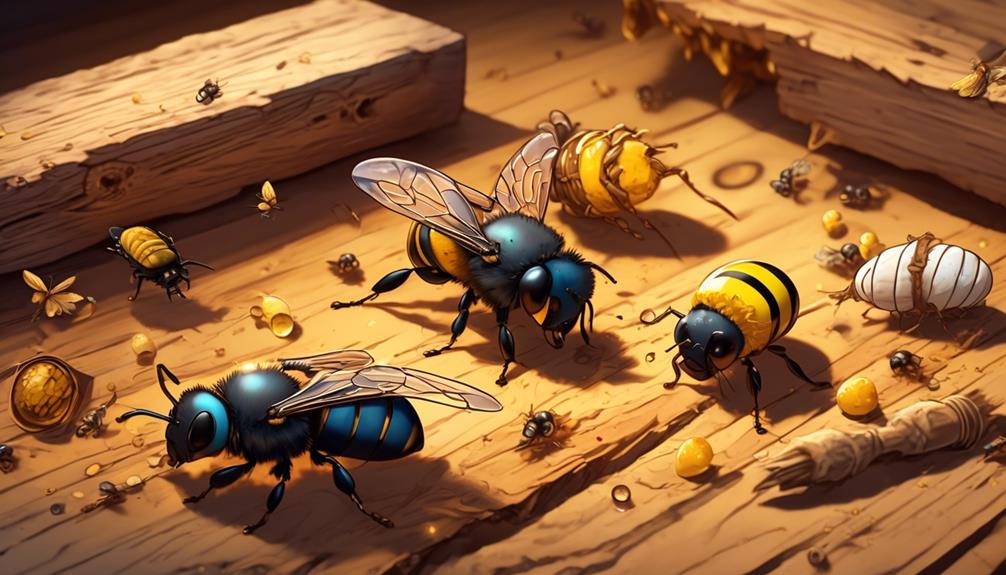
Building on our understanding of their unique behaviors and characteristics, let's now examine the life cycle of the carpenter bee. It's a fascinating process that begins with mating in the spring. After mating, female carpenter bees burrow into wood and lay their eggs in individual cells, each with a food supply of pollen and nectar.
Each carpenter bee goes through four stages in its life cycle: egg, larva, pupa, and adult. The egg stage lasts about a week, after which the larva emerges and begins to feed on the stored food. During this time, the larva grows rapidly, moulting several times as it increases in size.
Once the larva has consumed all its food, it spins a cocoon and enters the pupa stage. This is a period of transformation, where the pupa undergoes metamorphosis to become an adult bee. This stage can last between two weeks to two months, depending on environmental conditions.
Upon reaching adulthood, the carpenter bee emerges from its cell and begins its life as a pollinator. The entire life cycle takes about one year, with adult carpenter bees typically overwintering in their birth tunnels before starting the cycle anew.
Molting Process in Insects
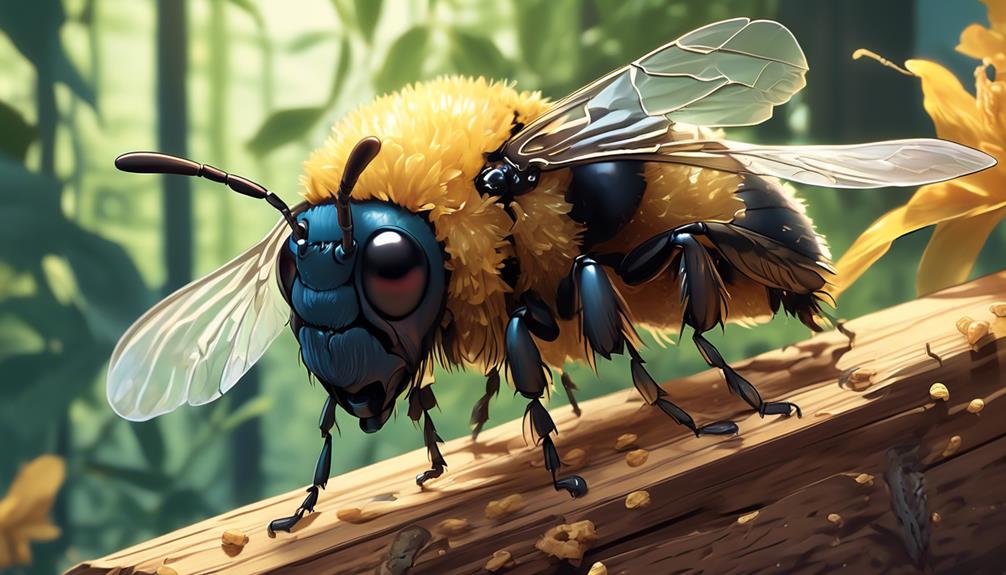
Often in their development, insects like carpenter bees undergo a fascinating process called molting, where they shed their old, outgrown skin to make way for new growth. You might be wondering, why do they do this? As insects grow, their rigid exoskeleton can't expand with them. So, they must discard this restrictive outer layer.
Molting, also known as ecdysis, commences when the insect's internal hormones trigger the development of a new exoskeleton beneath the existing one. As this new structure forms, the old exoskeleton starts to separate from the underlying skin. It's a fascinating process that requires precise hormonal and physiological coordination.
After separation, the insect consumes a lot of water, causing its body to swell and the old exoskeleton to crack and peel away. This might seem like a vulnerable time, but it's a necessary part of their growth.
In the case of carpenter bees, you won't usually witness this process as it typically happens within their nests. However, you might find discarded exoskeletons around their habitats. It's a clear sign of a thriving insect population.
Understanding molting can give you valuable insights into the fascinating world of insects.
Shedding Skin: Fact or Fiction?
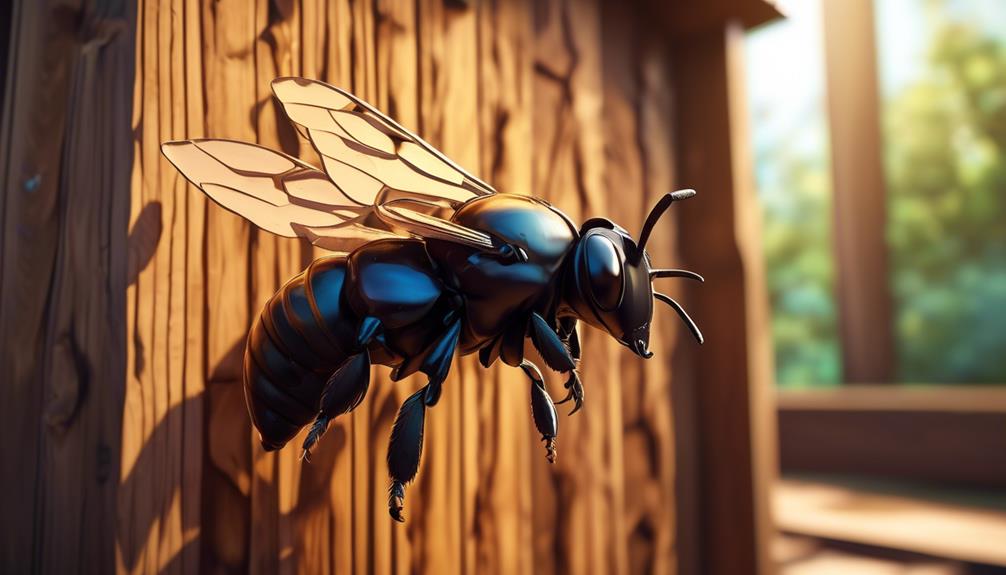
While it's clear that insects like carpenter bees shed their skin through molting, you might be questioning if this is a fact or a piece of fiction spun by science. Let's get into the details. Shedding skin, or ecdysis, is a crucial biological process that insects undergo as they grow and mature. It is indeed a fact, no fiction here.
To emphasize this point, let's take a look at the table below:
Stage | Process | Outcome |
|---|---|---|
Larva | Molting | Larger larva |
Pupa | Molting | Adult insect |
Adult | No molting | Final stage |
This table clearly states that molting occurs during the larval and pupal stages of a carpenter bee's life cycle. As the bee grows, the old skin becomes too tight and is shed to make way for new, larger skin. Once it reaches the adult stage, molting ceases as the bee has reached its maximum size.
Impact of Metamorphosis on Carpenter Bees
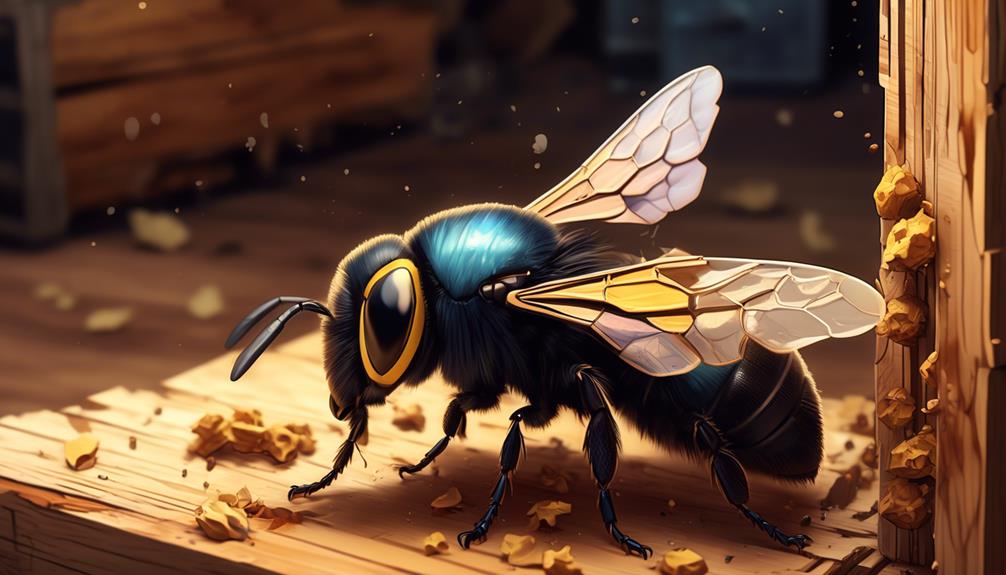
Through the process of metamorphosis, you'll find that carpenter bees undergo significant changes which greatly impact their size, functionality, and role within their ecosystem. The life cycle of these fascinating insects encompasses four stages: egg, larva, pupa, and adult.
As carpenter bees mature from larvae to pupae, they'll shed their skin multiple times, a process known as molting. This shedding allows the bees to grow and develop into their adult form. It's during this pupal stage that they acquire the physical characteristics of mature bees, including their robust size and powerful jaws.
Metamorphosis also affects the functionality of carpenter bees. As adults, they're equipped with fully developed wings for flight, a stinger for defense, and specialized mouthparts for feeding on nectar.
Moreover, this transformation plays a key role in their ecosystem status. Adult carpenter bees become solitary creatures, burrowing into wood to lay their eggs. Their burrows provide shelter, not only for themselves but also for other species, contributing to biodiversity.
Conclusion
So, you've learned quite a bit! Carpenter bees, like other insects, do undergo a molting process but it's not quite the same as shedding skin. They transform dramatically during their life cycle, thanks to metamorphosis.
It's a fascinating world, isn't it? Remember, these little carpenters play a vital role in our ecosystem, so respect their space.
Now you can impress your friends with your newfound knowledge about carpenter bees!

